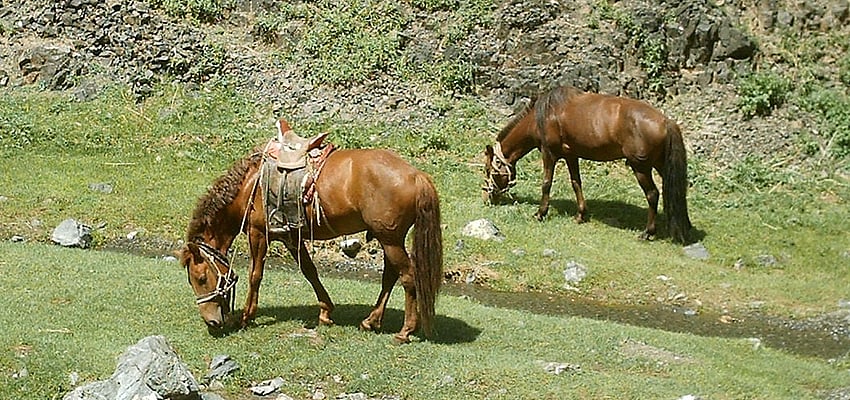


Stretching across 1,566,500km², Mongolia is home to a diverse landscape. As Mongolia is slowly opening up to the tourist world, its rich wildlife is certainly a major selling point. Eco-tourism is on the rise in a country that, fortunately, remains one of the least polluted in the world. Consequently, numerous laws have been introduced to protect its amazing, natural heritage. With 18 protected zones, 21 national parks, 19 natural reserves and 6 natural historic monuments, Mongolia is keen to preserve its assets.
Hemmed in by China and Russia, Mongolia borders neither sea nor ocean. Its climate, therefore, is continental with very harsh winters. Indeed it's said that Ulan Bator is the coldest capital city in the world. Summers can be warm but are unpredictable and nights can be glacial.
With steppeland covering more than half the country, Mongolia's landscape is diverse, with mountains, lakes, deserts and vast herbaceous plains. The steppes, which make up around 75% of the territory, follow three axes: the northern mountainous, forest steppe, the herbaceous central/eastern steppe and the semi-desertic southern steppe. And continuing further south, you'll find the Gobi Desert. Despite what many may think, this desert is not sandy and dotted with dunes, but rather stony and pebbled. Covering 1,200km from north to south and 2,000km from east to west, the Gobi Desert crosses the Chinese border. What's more, as you head west, the landscape is punctuated by the Altaï mountain range.
Even if Mongolia has no coastline to boast of, it does have several fresh water lakes, particulary between the Altaï and Khangai mountains. The country is crossed by numerous rivers, the best known being the Tuul, the Ouon, the Khelen and the Selenge, the latter's mouth reaching Russia's Lake Baïkal.
During a trip to Mongolia, a country where nature predominates, you're more likely to stumble upon an animal than a Mongolian! With pastures taking up 80% of the land, animal husbandry is big business in Mongolia. Nomadic communities tend to raise cattle, goats, horses and yaks, with dogs being reared for protection.
Mongolia also has its fair share of wild fauna. Wild boar, bears, snow leopards, wolves, deer and ibex roam the mountains. The steppes are home to range animals. Towards the northern Lake Khövsgöl and the Siberian Taiga, you'll see elan, wolves, wild boar, otters, hares and deer. And in the Gobi to the south, rarer species appear including the endangered Przewalski horse although the likelyhood of you spotting one galloping across the desert during a holiday in Mongolia is pretty slim. Wolves also roam the desert land, so it's wise to stay on your guard.
Mongolia is a bird lover's paradise as it's home to several species of migratory birds.
Plant life is also diverse, as the country boasts four ecosystems - the taiga, the high/middle mountains, the Central Asian Steppe and, of course, its famous desert. The central and eastern parts of the country are covered with verdant plains where elms, poplars, rhododendrons and edelweiss grow. The landscape in the taiga is Siberian, home to pine trees, birches, larch and aspen. As for the Gobi Desert, its rocky landscape is perfect for haloxylon trees, a rare species with a deep root system and little need for water.